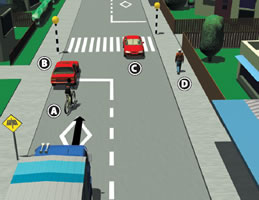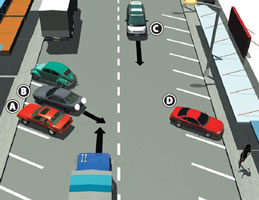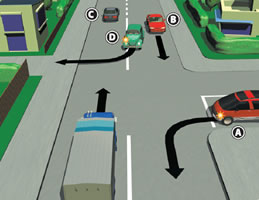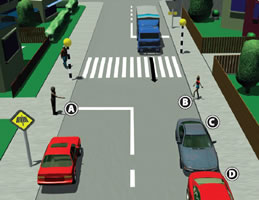It is rare to come across only one hazard at a time when driving. Most of the time you will have to deal with several hazards at once.
This means you will need to stay aware of all the hazards, but give most attention to the hazard that is most likely to develop into a dangerous situation and require you to take urgent action.
For example, if there are children playing near the kerb. They may run out after a ball or after each other. Using the system of vehicle control, choose a course as far away from the children as possible (while still keeping on your side of the road), check the mirror, use the brakes and slow down.
The following illustrations show scenes involving multiple hazards for the driver of the blue vehicle. Remember, the main hazard is the one that is most likely to require you to take urgent action.

Identify this hazard.
Hazard A is the main hazard. The cyclist is about to pull out around the parked car and move into the path of the blue vehicle.

Identifying the main hazard.
Hazard B is the main hazard. This car is reversing out of a parking space and is about to enter the path of the blue vehicle.

Identifying the main hazard.
Hazard D is the main hazard. This car is about to turn across the path of the blue vehicle.

Identifying the main hazard.
Hazard B is the main hazard. The child’s attention is focused on the adult on the other side of the road. Remember, the child may try to cross the road without looking.
In a modern truck before descending: